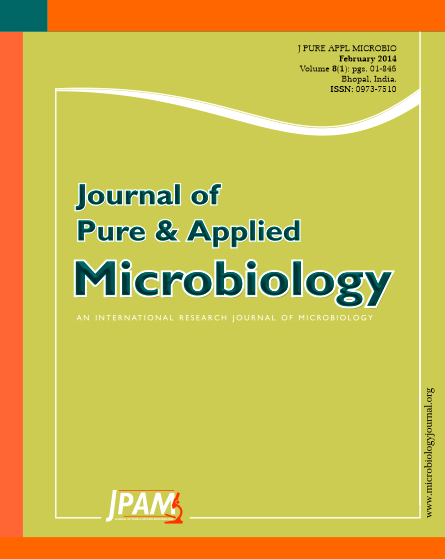Mycoremediation of majorly used Textile Dye “The Brilliant Blue” was investigated by using wood growing fungus collected from Nerium oleander, Mangifera indica, Azadirachta indica, Morus nigra and Psidium guajava. Three out of thirteen fungal isolates formed clear zone on agar plates when grown for 40 days with dye. Percentage concentration of dye left after degradation observed for three strains was 26% (w/v), 28% (w/v) and 32% (w/v). In the process, activity of Laccase was also observed for three strains. Optimization of the process was carried out by Response Surface Methodology. Optimization of process parameters indicated a 48.86 % degradation at pH 8, N concentration 4% (w/v), Carbon concentration of 6 % (w/v) incubation time of 16 days at temperature of 36 0C.
Wood growing fungus, Textile Dye, Response Surface Methodology
© The Author(s) 2014. Open Access. This article is distributed under the terms of the Creative Commons Attribution 4.0 International License which permits unrestricted use, sharing, distribution, and reproduction in any medium, provided you give appropriate credit to the original author(s) and the source, provide a link to the Creative Commons license, and indicate if changes were made.


